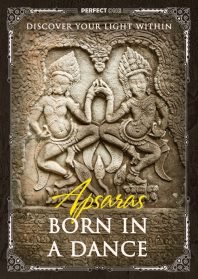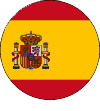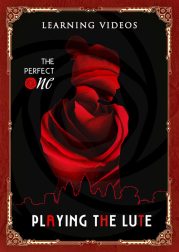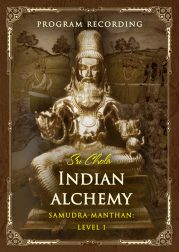Apsaras. Born in a dance

Among many different concepts of apsaras and one of them is embodying the concept “those who are born in dance”.
Traditionally, Apsaras are represented as celestial women, spirits of clouds and waters, who transmit their knowledge through dance. In Indian mythology apsaras were associated with different dimensions of space and its ability to manifest. In fact, this is a multi-level concept, representing, first of all, nature, born of the churning of space by the gods, the dance of the gods.
Initially, Apsaras were associated with the integral fields, the worlds of the macrocosm, and then with the elements of ether and water. Over time, the apsaras began to represent various macrocosmic processes comparable to the generation of life-giving force, which is understood as the churning of space by the apsaras themselves to obtain the divine elixir.
Thus, apsaras personify the life-giving and fruitful forces of the macrocosm, and each apsara individually embodies one or another vibration, proportion, task, which is expressed in the idea of her dance (or one or another form of performing art).
The very word apsara (अप्सरा) comes from apsu rasa (अप्सरस्), which means the essence of a substance (oceanic water, alchemical water) formed during a certain process, dance (churning, churning). In fact, it was this essence that formed the apsaras as the bearers of knowledge about the nutrition of amrita – the elixir of immortality. And the Apsara dance is a certain kind of vision, revealing the powers of the imagination and the depths of infinity. This is the development of the process of obtaining amrita and the art of its consumption.
In theory, if you look at the fields of the macrocosm, this group should consist of 13 apsaras, but from the standpoint of materialization on earth, it is worth talking about groups of no more than 9–11 apsaras. At least this is defined by a group of nine flying Chinese feitian dancers (飞天, Fei Tian).
The materialization of the concepts and principles associated with the Apsaras is most actively represented in the Khmer culture. With the expectation of representing their energy, temples began to be built on the principle of Indra’s heavenly palaces for the development of supernatural and magical powers.
Apsaras are often described as those who were sent to the earth by Indra, on the one hand, to capture the seed of ascetics, and on the other hand, to prepare the drink of immortality in order to transfer the generative power to the gods or Gandharvas (गन्धर्व, Gandharva), heavenly demigod warriors, servants Indras who interact with Apsaras. According to legend, Gandharvas (they are also called svarvesyah, svarvešyāh) do not like anything, can change their appearance and are endowed with superhuman abilities – prabhavas (prabhāva).
In fact, apsaras correspond to all energy zones where one can receive the divine elixir and where the space of the macrocosm accumulates. For example, it can be 32 mountains between the Lotus lakes, located next to the four mountains of Anjana. Their strength is personified by the Ajanta complex, where there is an alchemical cult of Hanuman, or Ajaney, who communicates with the arhat saints. Apsaras can also be attracted by a space capable of communicating with the macrocosm, which Angkor Wat has become, representing 60 apsaras. This may be the Temple of Karnak (Ancient Egypt) with the cult of Amon-Ra or the sacred oak grove.
Be that as it may, the groups of Apsaras were formed according to the cosmogonic principle. Menaka (Menaka), Rambha (Rambhâ), Tilottama (Tilottamā), Gritachi (Ghritachi), Manjukeshi (Mañjukeśī), Sukeshi (Sukeśi), Vigagha (Vidagdhā), Vividha (Vividhā), Budha (Budhā), Sumala are mentioned among the main Apsaras. (Sumālā), etc. They were divided into classes in accordance with the ideas of the temple.
Over time, the idea of apsaras and their tasks has changed. There are 13 Apsara daughters of the great sage Kasyapa. According to the Bhagavata Purana, their names were Alambusha (Alambuṣā), Mishrakeshi (Miśrakeśī), Vidyutparna (Vidyutparṇā), Tilottama (Tilottamā), Rakṣitā, Rambha (Rambhā), Manorama (Manoramā), Keśinī, Subāhu, Surajā, Suratā and Supriyā.
“Natya-Shastra” according to the technique of dance distinguishes 26 apsaras. And according to the Shiva Purana (one of the eighteen major Purana texts), Apsaras are a group of deities living on the top of the Himalayas, where celestial maidens play their lutes, taburas and drums and dance.











